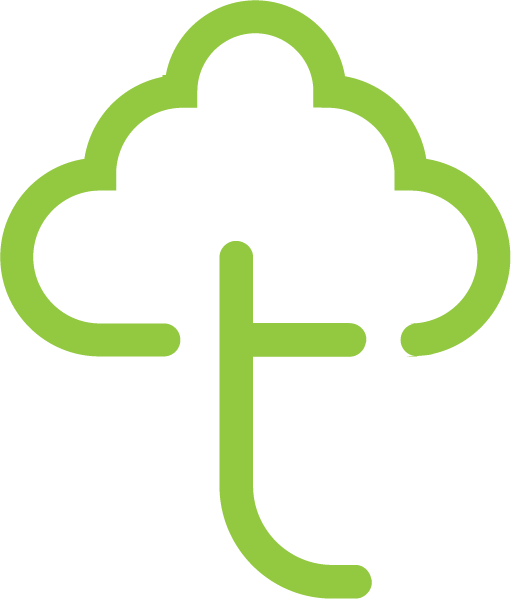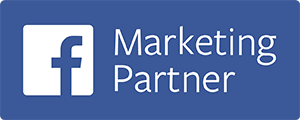If you’re ready to grow your business online you’re going to need more than just a landing page. What you need is a website that turns casual visitors into raving fans.
With all the DIY methods and hacks out there, it’s tempting to think building a website is a simple, straightforward process.
While you don’t need to know how to code to use some website builders, their drag-and-drop tools can still be tricky and confusing.
There’s a learning curve to these platforms, and that’s something they never mention when they talk about building successful websites with their software. And why would they?
The truth is, building a website on your own can become a major time-suck and cause a great deal of stress. You might have every intention of building a simple website, but if you’re not careful, you can end up going down rabbit holes that cost your business precious time, money, and resources.
This is especially true if you’re planning to build a professional-looking website that visitors will enjoy using. It won’t be as easy as choosing a template, uploading photos, and providing text.
The good news is: building a website from scratch doesn’t have to be a headache. When you have a clear picture of the scope of work it takes to build a website, you can make an educated decision about what’s right for you.
That’s why we’ve broken down what the actual cost of a website is – from sheer time to technical skills. When you use this guide, you’ll be equipped to choose the best process to build a website that converts casual visitors into buying customers.
Building a Website: The Scope of Work
Building a website isn’t as simple as dropping some headlines into a WordPress template. It actually takes a massive scope of work to create a website that grows your business.
When you’re building a website, you’ll need:
- Branding
- Copywriting
- Web Design
- Web Development
- Images and Graphics
- Technical Support
Depending on your website’s specific needs, you could get into a whole list of other add-ons.
For example, setting up an ecommerce store or enabling online booking can require some heavy-lifting from a tech standpoint, which will add time and money to your bill.
The process can be pretty intense, so you must determine exactly what you’re looking for before you begin your website journey alone.
Should You Build Your Website On Your Own?
If you need a website, you have a choice to make.
Do you build your website on your own, or do you hire someone to do it for you? Let’s take a closer look at how much time and money it will actually cost you to build a website on your own.
If you choose to build a website on your own, you’re going to reap the benefits of full customization. You get to handpick the fonts, words, design, layout, and functionality on your own.
At the same time (unless you’re a tech-wizard), you’re signing yourself up for months of frustration. You’ll have to resize images, build graphics, create compelling copy, and you may even end up having to learn to write some code!
Building a website on your own is doable, for sure; you can learn virtually anything you need online. But the entire experience can become a bit of a nightmare, and the technical difficulties that you will inevitably encounter can become overwhelming.
Let’s compare the costs of using some of the most popular website builders right now.
Keep in mind that the free offerings listed above will put ads on your website. The free offerings also do not include the cost of your domain name.
This means that your website name will have the hosting site’s name attached to it (for example: username.wix.com/sitename), which is obviously bad for business because it lacks professionalism.
That being said, some site builders allow you to use your own domain name for an extra fee.
Premium plans include a variety of enhanced features, such as your domain main, no ads, videos, SSL certificate, and storage space allocation.
Free drag-and-drop site builders, such as WIX, SquareSpace, and GoDaddy, seem easy to use based on what they show on minute-long promotions.
In reality, using these platforms will require you to fight through a lot of challenges. Usually, it takes longer than you think it will to get your website live and drawing in visitors. Converting and customizing a template into a working website involves a lot of moving parts.
Here’s a short list of what you’ll need to be able to do:
- Convert your logo and other images into high-quality transparent PNG files.
- Make sure your website copy is up-to-date, unique, and optimized enough to rank on Google.
- Format and reformat images and other content to optimize them for both desktop and mobile interfaces.
- Add the features you want to ensure your website visitor has the ideal experience.
- Tweak your website here and there, ongoing, to keep it running smoothly.
- The ability to troubleshoot all the little issues you'll inevitably run into.
Needless to say, building a website from scratch is a time investment, and building a website that gets traffic and becomes profitable takes a long time. This is especially true for somebody with little to zero technical knowledge.
Think of the opportunity costs.
All the EXTRA time you spend working on your website, learning along the way, and figuring out how to get things to work properly is equivalent to a significant loss of potential customers and income. It also takes you away from the important work you need to be doing to ensure your business is running smoothly.
While you’re trying to save money by not paying for the services of experts, you may actually lose more money by delaying the launch of your website or by launching a flawed and insufficient one.
Case in Point
DigitalTreehouse built the stunning Dr. Dallas Dance website using WIX, as the client was already using WIX and it was already tied to their commerce system and customer database.
The DigitalTreehouse team of experts — which includes designers, coders, copywriters, and digital strategists — spent almost 40 hours to properly build the website using the supposedly seamless and intuitive functions of WIX.
Imagine how much longer it would take someone without website building experience.
They may spend 100 or even 200 hours learning on the fly, trying to get it right. And after all that hard work and stress, they might end up with a low-grade website.
Let’s say you’re a CPA with a $75/hour rate. The time you’d spend building your website on your own could cost you between $7,500 and $15,000. Then add that hefty bill to your opportunity costs, along with the stress and frustration you’d suffer trying to do something that’s outside your realm of expertise.
In the long run, you’ll save more money by leaving the work to the experts.
The Best Way to Build a Website
Building a website on your own can become costly - fast.
You may think you’re saving money, but you’re actually losing many, many hours or days that you could be spending on tasks within your zone of genius - the tasks that need you the most.
A well-built and well-designed website can bring an immense return on your investment. You deserve a website that helps your business grow and scale. When you work with a gig agency, you’ll save yourself the unnecessary stress
and have a website you’ll be proud of.
And of course, your new website will earn you back the money you paid to have it expertly built - and then some.
DigitalTreehouse charges $100/hour to build a website, and we can typically create your perfect website in 25 to 50 hours. Based on the CPA example above, the total cost is far less expensive than doing it yourself. You’ll save time, money, and unnecessary stress.
Plus, you’ll have a team of expert designers, copywriters, and digital strategists to make sure your website looks impressive and converts visitors into clients.
Need a shopping cart installed? We can do that. Need an online scheduling system? We’ll have it up and running for you. Need to integrate your website with internal systems like ERPs or CRMs? Our team is ready to deliver.
Digital Treehouse is a full-scale gig agency that can help you with any of your marketing needs. Ready to be the proud owner of a beautiful and profitable new website?
Click here to schedule a call and begin the website building process today.

SHARE ARTICLE
Schedule Your FREE 15-Minute Consultation
oUR rECENT bLOGS









